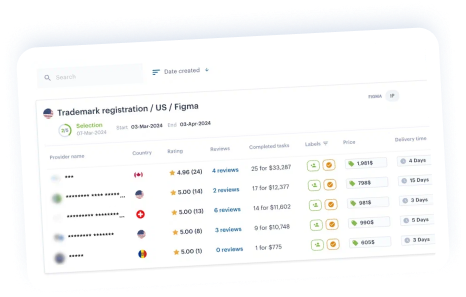To obtain a patent right in Japan, an interested party must file an application, submit it to the Japan Patent Office, and undergo examination. Prior to the patent registration procedure, it is important to ensure that there are no similar inventions. At J-PlatPat , you can find all the necessary information about published Japanese patents.
If, after a thorough search, you determine that there are no similar patents, it is time to file an application.
Application Process
Japan also operates on the “first to file” principle, so it is advisable to file as early as possible: the first to file will be granted the patent. If you have already filed in a Paris Convention country, you can claim priority. The priority document must be submitted within one year and four months from the date of the first filing of the priority-based application. This also applies to PCT applications .
If you have a priority based on an application with the European Patent Office (EPO), you do not need to submit a priority document because the EPO and the Japan Patent Office have established an electronic transfer system.
Applications must be submitted in Japanese and include specifications, drawings and the following information:
- Inventor’s name and address;
- Name and address of the transferee;
- Priority date and country;
- Priority Application Number.
The invention should be described clearly and completely. Unexamined applications will be published in the Official Gazette within 18 months from the filing date.
Review Process
First, a formal examination is carried out: the application is checked to see if it meets the necessary requirements. If any required documents or sections are missing, the JPO will send an invitation to correct the application.
The full examination will not take place until a request for examination from the applicant arrives at the JPO. In addition, a necessary fee based on the number of claims must be paid. The applicant must make such a request within three years from the date of filing in Japan. If a request for examination is not filed within the deadline, the application will be considered withdrawn and cannot be reinstated.
After receiving your request, a JPO examiner will conduct an examination. He or she will decide whether your invention should be patented or not. The examiner will check whether your application meets the legal requirements. The requirements are based on the following conditions:
- Whether the invention is based on a technical idea utilizing a law of nature;
- Whether there is industrial applicability;
- Whether the technical idea existed prior to the filing of the current application;
- Couldn’t it have been easily invented by someone skilled in the field?
- Whether the application is the first to be submitted;
- Whether it is likely to be offensive to public order and morals; and
- Does the description in the specification exactly match the requirements for patentability?
If any of the requirements are not met, a notice of refusal will be sent to the applicant, who has the right to submit a written argument arguing that the invention is different from the existing technology or to amend the claims to overcome the reasons for refusal.
Granting and publication of patents
The examiner may grant the patent if he finds no grounds for refusal or if they have been resolved through comments or amendments. However, if the examiner believes that the grounds for refusal have not been resolved, a decision of refusal will be made.
The applicant then has the opportunity to appeal against the refusal. Once a patent is granted and entered in the Patent Register, patent rights exist. After the patent is registered, a certificate of patent is sent to the applicant.
Objection
The contents of the patent right recorded in the Patent Register are published in the Patent Gazette. A third party may file an opposition within six months from the date of publication. In addition, even if a patent is registered, if it has defects, it may file an invalidation petition.
The term of a patent is 20 years from the filing date. For pharmaceuticals and agrochemicals, the patent can be extended for up to 5 years. You can find the latest information on patent applications, examinations, oppositions and other fees here .






